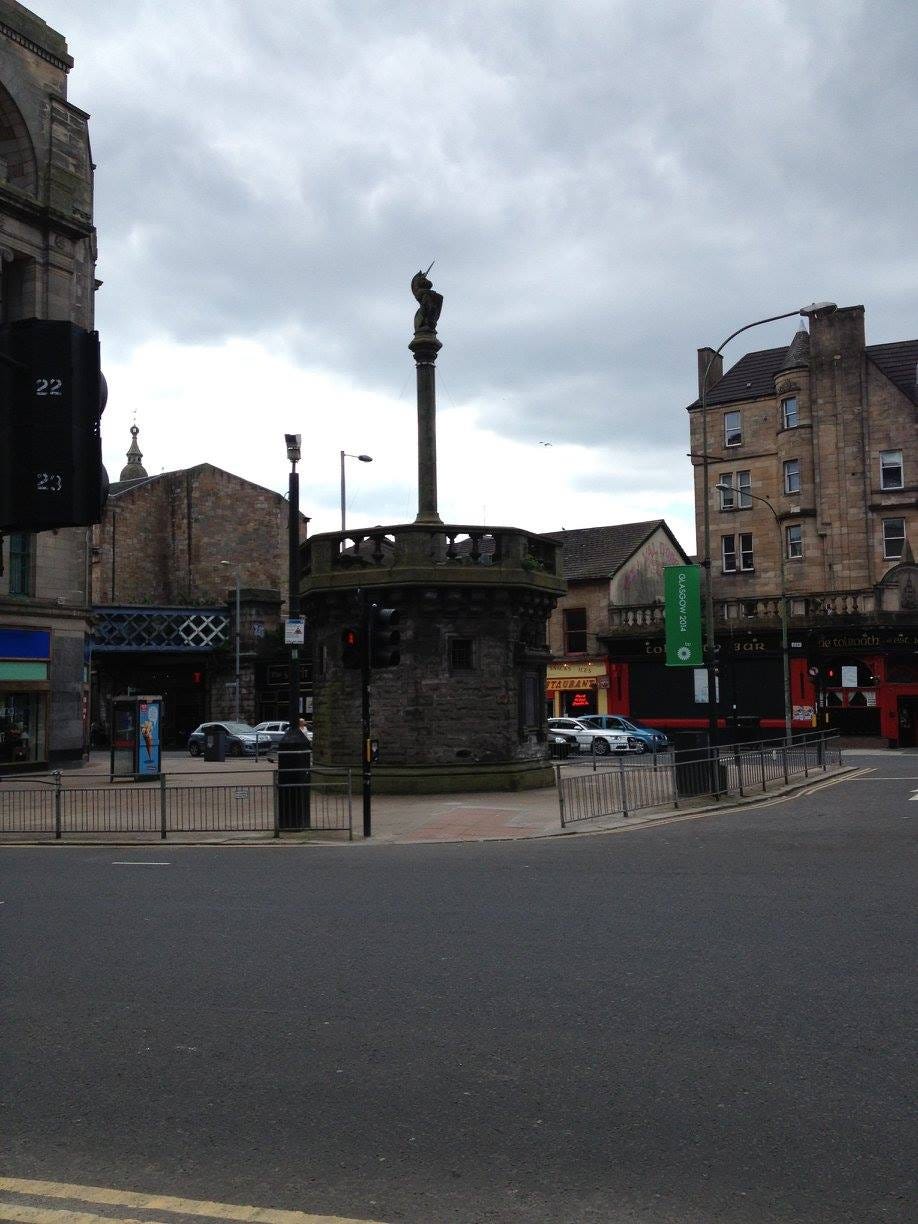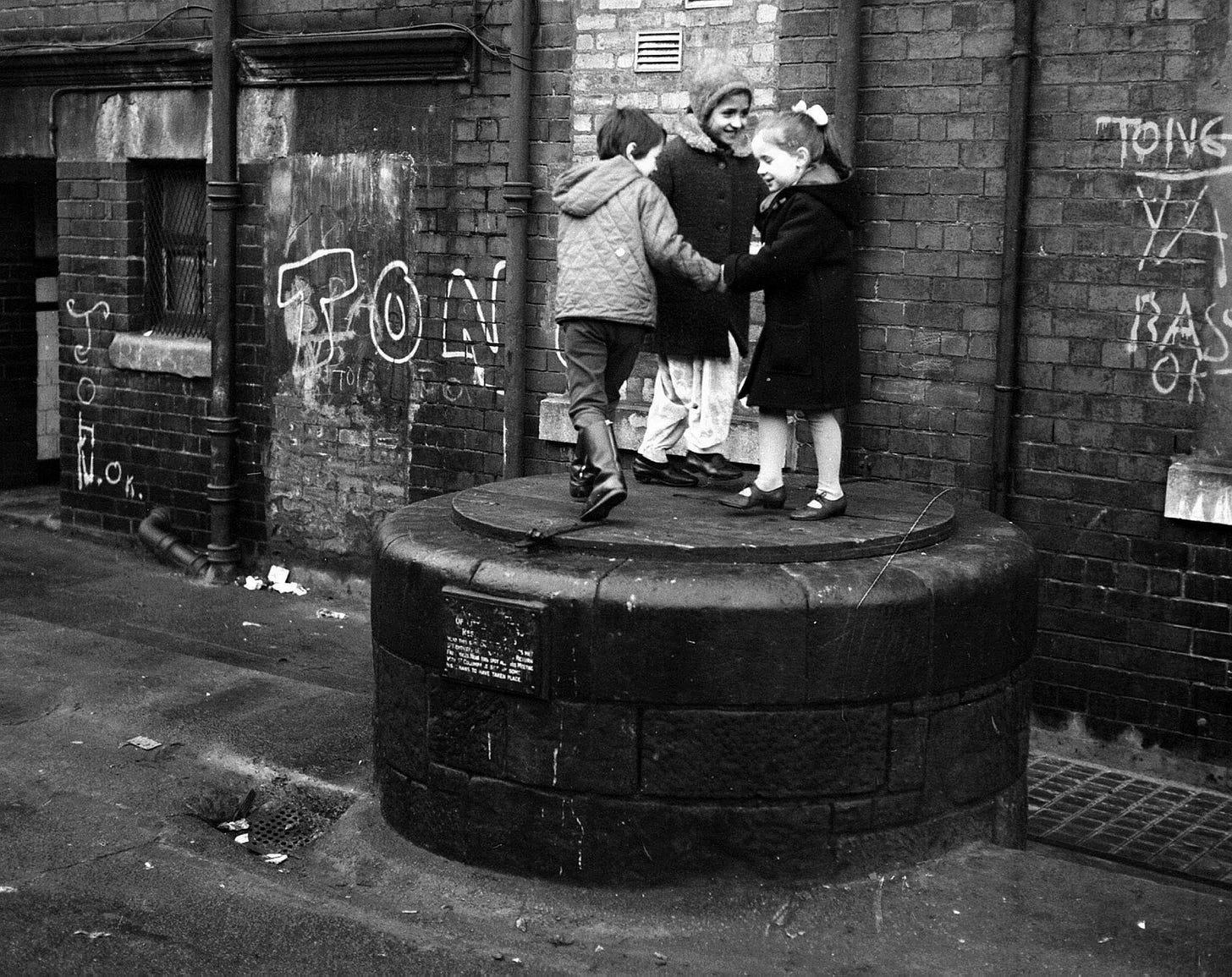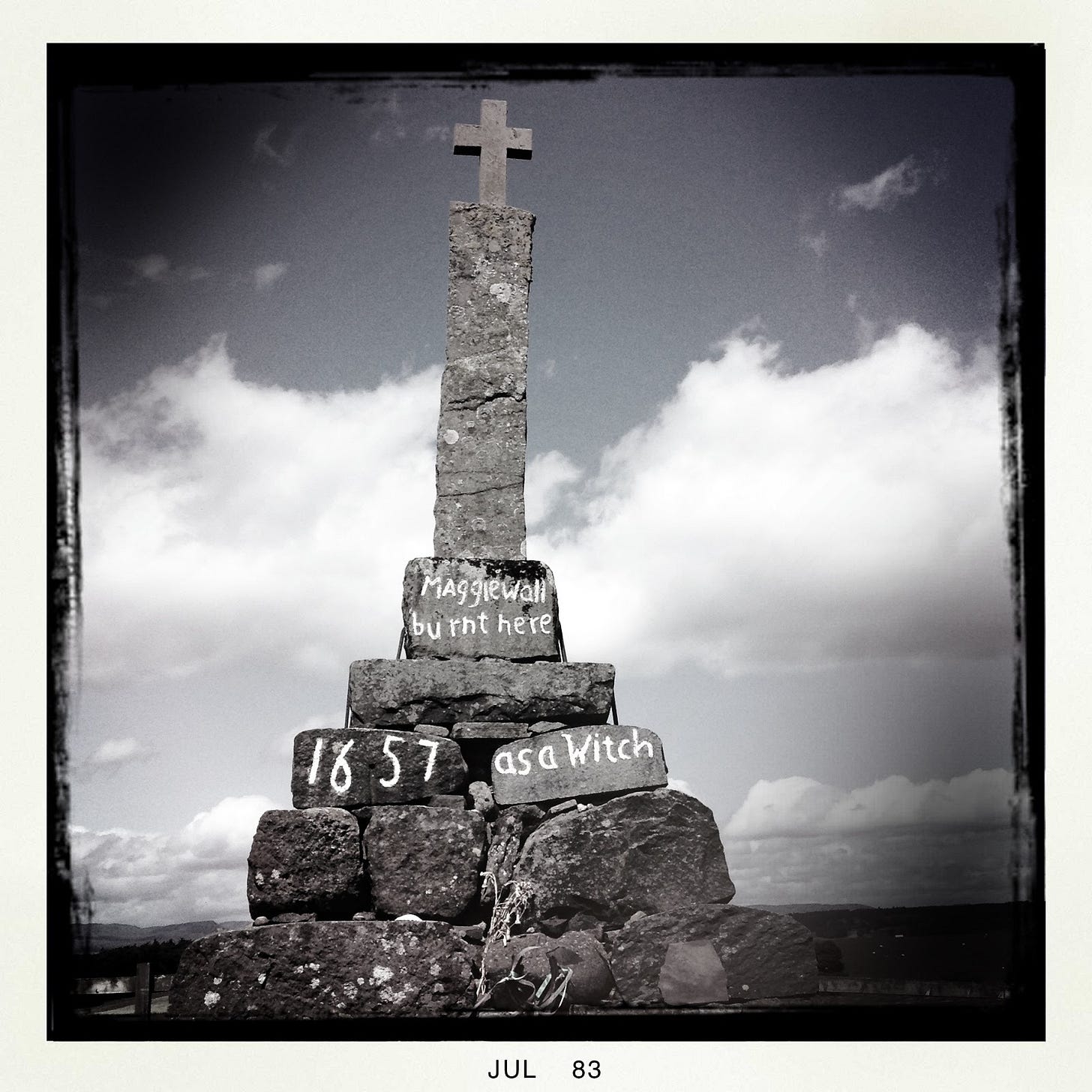Shortly before Nick and I went on our trip to Scotland in March, I was perusing the wonderful ‘Folklore of Scottish Lochs and Springs’ by James M. Mackinlay, published in 1893. It is a very detailed and useful volume, and is one of the books that I used when researching for my dissertation.
Near the beginning, Mackinlay mentions ‘Little St. Mungo’s’ in Glasgow. It was a chapel built around 1500, not long before the Reformation would sweep through the country, changing everything. The chapel also had a well named after St. Mungo.
It was built in the heart of the medieval city, about a mile south of the Cathedral, just off the Gallowgate, in a small wood known as arbores Sancti Kentigerni “the trees of St. Kentigern” (Mungo is the pet name of St. Kentigern).

In the archaeological notes on the Canmore.org website, it states that in 1593, the church was sold to the Town Council, and plans were put in place to turn it into a hospital.
Not much seems to be known of the place until 1754, when it was bought by Robert Tennent, who built an inn on the site. The chapel and graveyard disappeared, but the well remained, and on the ‘Lost Glasgow’ Facebook page I found a wonderful photo of children in the 1960s playing on top of the large, capped well.
A plaque on the well read, “Ancient well of Little Saint Mungo. Restored 1906. Near this spot Christian converts met St. Kentigern (St. Mungo) on his return from Wales. Near this spot also his meeting with St. Columba is said, by some historians, to have taken place.”
This romantic story of the ancient history of the well was disproven in 1980, however, when an excavation took place and traces of a medieval water mill were discovered. The report concluded that the well could only have existed from late medieval times on, and not earlier.
The inn which was built on this spot used material from the Bishop’s palace which, though in use up until the late 17th century, had fallen into disrepair by the time the inn was built. The Inn was known as The Saracen Head, and many famous people stayed there, including Robert Burns, James Boswell and Dr. Johnson, and William Wordsworth and his sister Dorothy.
The inn was demolished in 1904 (two years before the plaque was placed on the old well) and a row of houses was built in its stead. The current Saracen Head pub (which I have walked by many times, but have never been within) still has some relics from the former inn, including a poem scratched on a pane of glass by Robert Burns. The pub must have salvaged the relics when it relocated to the opposite side of the street.
Another relic held at the current pub is a mysterious skull, purported to be that of Maggie Wall, the last witch burned in Scotland. But though there is a stone memorial to her in the village of Dunning, which I have seen, Maggie Wall never existed, and it is believed that the memorial to her name is in remembrance of all the women burned as witches in Scotland. It was first erected around 1800 by the local school master David Balmain in Dunning, and the name probably came from the field in which it is situated, called Muggies/ Maggies Walls.
Whose skull is it that sits in the Saracen Head pub? It is the skull of a woman. But most likely she came from the Little Saint Mungo churchyard from the 1500s, for when the building was demolished in 1904, human remains — from the graveyard — were found in the cellar.
The well house is long since destroyed, and though the well is still there, it is capped, and lies beneath the pavement. It may have only dated from the time the chapel was built, but the veneration of St. Mungo inspired the people of Glasgow to weave a beautiful story around it, one which outlived the brief life of the chapel.







Oh Mairi, how fascinating! I often feel such sadness at the loss and change to these ancient churches, but honestly, your post helped me see that ongoing, continuing relationship that still persists.
Mairi- My favorite part of the this article is the Lost Glasgow black and white photograph. With the map being a close second. I always love the phenomenal contrast between what was and what is. And this is a lovely reminder. 🙏